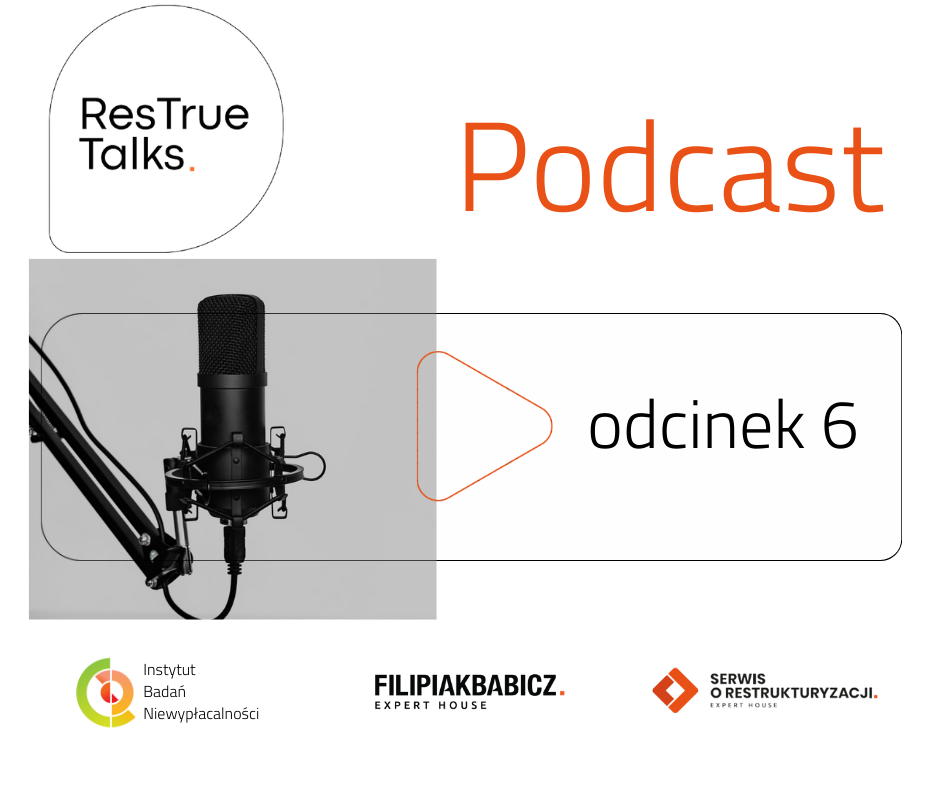
State aid for restructuring – better late than never

The Act on granting public aid for rescuing or restructuring entrepreneurs is not a new intention. It appeared in the list of works of the Council of Ministers as early as in September 2018 as an implementation of the public aid programme for restructuring approved by the European Commission as part of the government package “New Opportunity Policy”.
The aid is granted from the funds of the state budget on a written application submitted to the minister in charge of economy or the government agency indicated by him (the act indicates the Industrial Development Agency).
The state drip is to be three and is to be granted successively, along with the progress of restructuring activities. At the beginning of the road an entrepreneur may apply for:
1) rescue aid,
in order to enable the business activity to be conducted for the period necessary to :
a) to draw up a restructuring plan, which in my opinion is to prepare a corrective action plan in the shape of a restructuring plan within the meaning of Article 10 p.r.o., and not to conclude and approve an agreement with creditors in the sense of the concept of a restructuring plan as defined in the EU Directive on the framework for preventive restructuring,
or during the period until
(b) the winding-up of business activities.
The aid may also be used to carry out the necessary analyses in this respect, in particular for restructuring consultancy costs.
Rescue aid is granted in the form of a repayable loan bearing interest (reference rate + 4%, i.e. currently from 18.3.2020 it would be 5% pa) and secured at least in 50% (mortgage, pledges, assignment of receivables, but also notarial submission to enforcement or even a promissory note), the amount of which depends on the operating result for the previous year according to a fairly simple statutory formula:
EBITt + At – (working capital – working capital-1)
———————————————————————-
2
where the individual symbols mean:
t – the financial year preceding the granting or notification of the aid,
EBITt – financial result on operating activities for the last financial year prior to granting or notification of aid,
At – depreciation for the last financial year preceding the grant or notification help,
(working capital – working capital-1) – change in working capital -the difference between the level of working capital in the last financial year prior to granting or notification of the aid and the level of working capital in the financial year prior to the year preceding the grant or notification aid; the working capital position in a given year is calculated as the difference between current assets and current liabilities.
The application for rescue aid is quite complicated, but it will not cause any problems to entities undergoing restructuring proceedings. Most of the data can be extracted from the restructuring plan, the content of which is set out in Article 10 of the MSF.
The Minister or the Industrial Development Agency accepts the application in whole or in part, by way of a decision issued in principle within 30 days, if it is justified by an analysis of the economic and financial situation of the entrepreneur and the amount of aid applied for allows to achieve its objective.
The problem is that rescue aid is granted for a period not longer than 6 months. As a rule, this period will be definitely too short, if we assume that the support is granted for the period until the conclusion of an agreement with creditors. Therefore, at the stage of legislative works it is worth thinking about its extension.
Temporary restructuring support
2) After the rescue aid has been used, it will be possible to apply for temporary restructuring support, the aim of which is to enable running the business activity for the time necessary to implement the worked out restructuring activities. This support is limited to micro, small and medium-sized enterprises, using similar criteria and in the same form (loan) as with rescue aid.
The entrepreneur must attach to the extended application a simplified restructuring plan, which is an extensive description of his situation and market environment. Support is granted by decision of the Minister or the Industrial Development Agency and is conditional on implementation of the simplified plan. Measures to limit the distortion of competition must be implemented at this stage.
The temporary support is limited to the amount necessary to continue operations for the period for which it is granted, but not for more than 18 months. If the temporary support is directly preceded by rescue aid, the rescue aid period shall be counted towards the 18-month period referred to above.
Restructuring aid
3) Finally, the undertaking may apply for restructuring aid granted in order to implement the restructuring plan and restore its long-term ability to compete on the market. It may only supplement the own contribution, which is to constitute at least 50% of its share in the restructuring costs (25% – in the case of a micro or small entrepreneur; 40% – in the case of a medium-sized entrepreneur).
It may be granted in form:
1) loan;
2) taking up shares or stocks in the increased share capital;
3) taking up bonds;
4) a change of loan repayment dates towards the entity granting restructuring aid;
5) conversion of a loan, granted as rescue aid, into shares or stocks of an entrepreneur;
6) relief in the execution of an administrative fine.
The application must be accompanied by an appropriate restructuring plan and comprehensive financial documentation. The granting of restructuring aid is conditional on the implementation of the restructuring plan, including by means of asset, financial, organisational and employment restructuring measures, or with a view to modernising or rationalising production, including changes in production profile. It will also be necessary to take measures to offset distortions of competition on the market.
The assessment of the application by the Minister or the Industrial Development Agency must take account of much more criteria of a systemic nature, in particular:
1. the priorities set in the government’s restructuring programmes;
2) the expected economic viability of the undertaking in difficulty the economic situation after the restructuring process;
3) the amount of employment in an entrepreneur in a difficult economic situation;
4) forecasts of supply and demand on the market on which the undertaking in economic difficulty operates;
5) the location of the business conducted by an entrepreneur in a difficult economic situation.
In the case of rescue and restructuring aid, attention is drawn to the rather exaggerated requirements of the entity, as defined in Article 141 of the Act – Restructuring Law.
This aid may be granted if the entrepreneur:
1) started business activity in a given sector in the period of at least three years before the date of submission of the restructuring application;
2) does not conduct economic activity in the iron and steel, coal mining or financial sector;
3) does not operate on the market where long-term structural overproduction occurs or may occur;
4) is not an entrepreneur belonging to a capital group, nor is it taken over by any entrepreneur belonging to the capital group, except where it proves that its difficult economic situation: (a) is internal in nature and not the result of an unjustified allocation of costs within the capital group, (b) is too serious to be solved by the entrepreneur or entrepreneurs belonging to the same capital group.
Such an entrepreneur must either be insolvent within the meaning of Art. 11 of the Bankruptcy Act or meet the following conditions:
1) the entrepreneur, as a result of the losses incurred, has lost more than a half of the capital, in particular if the sum of the profit (losses) from previous years, net profit (loss) in a given financial year, reserve capital, revaluation capital and other reserve capitals (funds) is negative and its absolute value is greater than 50% of the basic capital (fund);
2) an entrepreneur other than a small or medium one, if within the last two years the ratio:
a) debt to equity capital was greater than 7.5,
(b) operating profit plus depreciation to interest was less than 1.
Aid for temporary restructuring support may be granted to a micro, small and medium-sized enterprise which fulfils the above conditions, provided that the total amount of aid granted and applied for does not exceed EUR 10 million.
The above conditions may be dispatched if the entrepreneur provides services of general economic interest, with additional restrictions.
The aid is allowed once every 10 years, but it can be granted more often if the difficult economic situation is not the entrepreneur’s fault.
We will undoubtedly follow the legislative work.













